Wisconsin’s Oak Leaf Trail
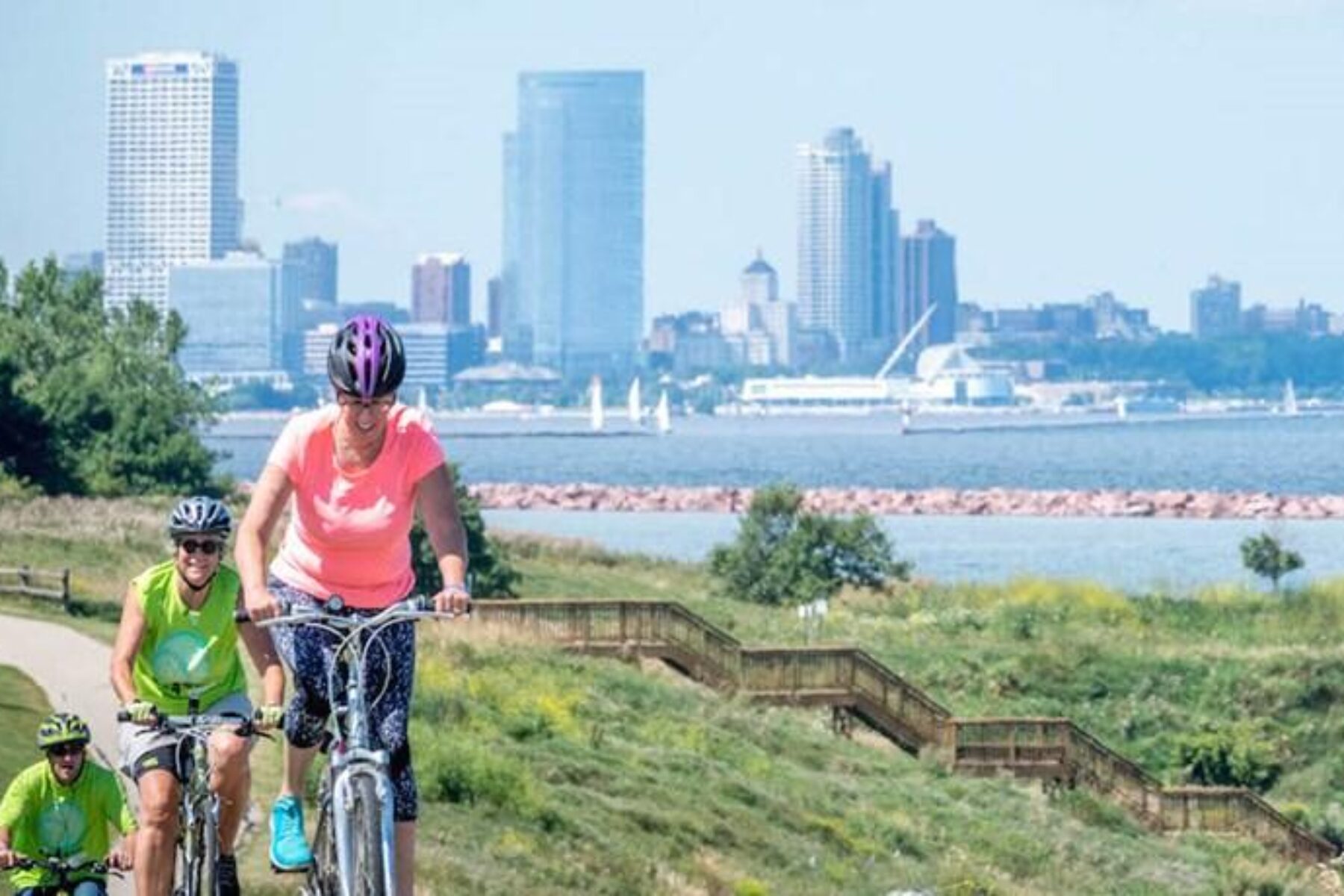
Trail of the Month: December 2017
“It’s a jewel of southeast Wisconsin. The more it connects, the better it gets.”
You might suspect that Wisconsin’s longest paved trail unfurls unimpeded through the state’s rural countryside or perhaps spins out beneath the trees of the northern woodlands, but you’d be wrong. The Oak Leaf Trail, covering a whopping 120 miles, encircles Milwaukee, the state’s largest city, and spans Milwaukee County nearly edge to edge. Its shape isn’t linear—unlike most trails of this length—but instead looks rather like a Salvador Dalí clock or a somewhat droopy O.
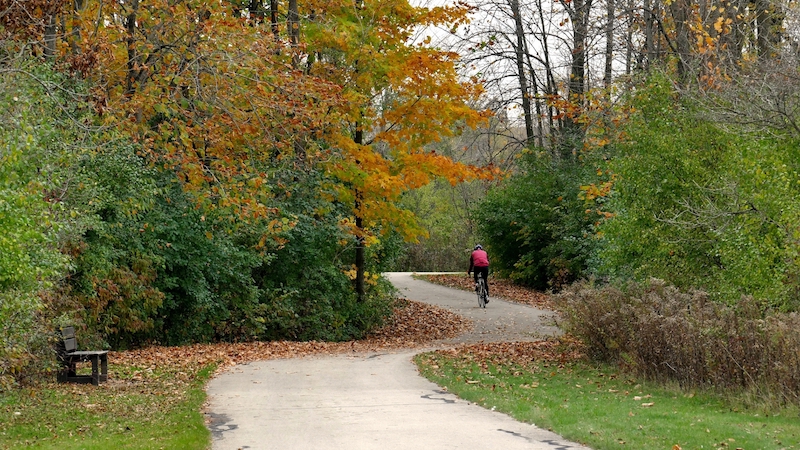
The massive trail, which is managed by the county, puts residents and visitors within foot-powered distance of dozens of parks and attractions of all kinds. Museums, sports venues, a lighthouse, a botanical garden and beer gardens (outdoor bars popular in the beer-loving city) all line the trail. To the east, the Oak Leaf is bordered by Lake Michigan, one of the Great Lakes, which provides some of the trail’s most stunning views.
“The Oak Leaf Trail is fabulous,” said Willie Karidis, project manager for the Route of the Badger, a TrailNation™ project being led by Rails-to-Trail Conservancy (RTC). “It’s really well maintained, and there’s a lot of pride behind it.”
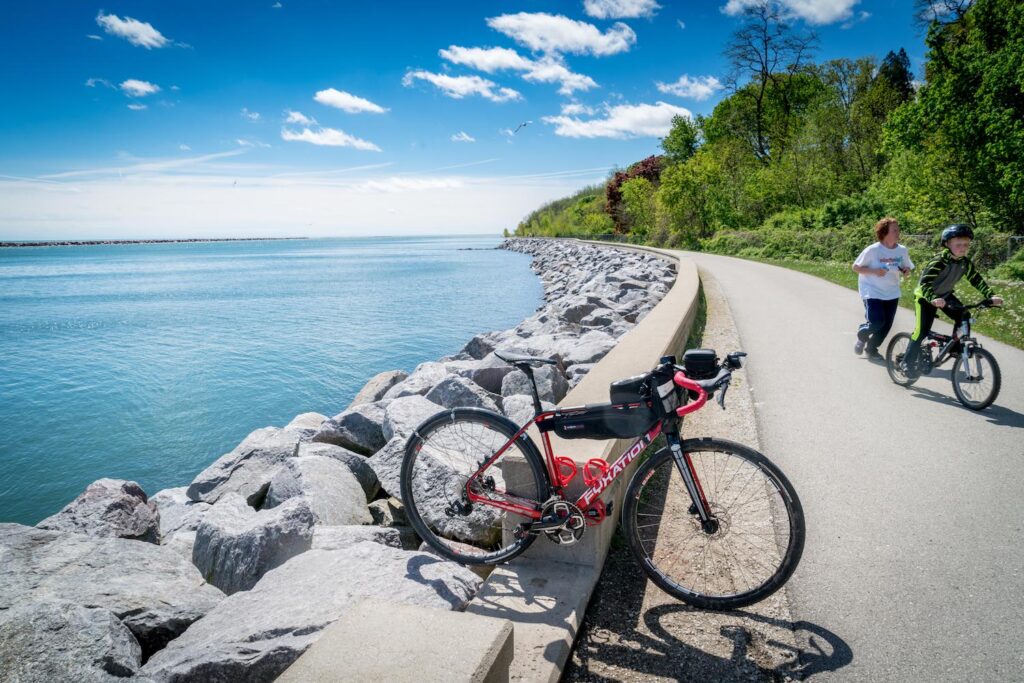
Building on its success, the Oak Leaf Trail serves as a central gateway to the Route of the Badger, a developing 500-mile trail system that will span seven counties across southeast Wisconsin. Currently, 340 miles of the network are already on the ground; the 160 miles left to go will fill gaps in the route and expand its reach to more communities. The transformational project will provide increased opportunities for physical activity, tourism, connections to nature, recreation and stronger businesses along the route. Future linkages could even someday extend the trail south to Chicago and northwest to Minneapolis.
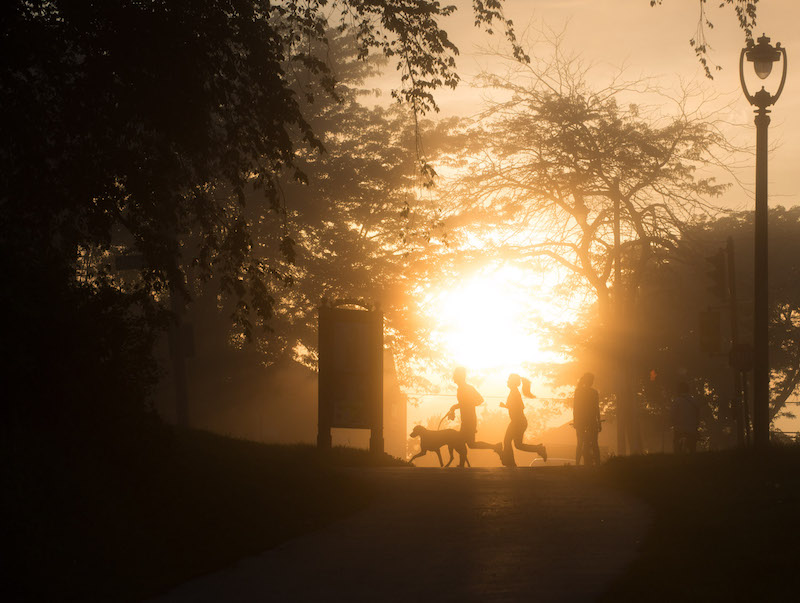
Trails, which are such an important part of the region’s future, have been valued here for a long time. Back in 1939, a bicycling advocate named Harold “Zip” Morgan envisioned the first 64 miles of what would become the Oak Leaf Trail. The route primarily followed the broad parkways that line the Milwaukee and Menomonee rivers. A few decades later, it was named the “76 Bike Trail” in honor of both the year 1976 and the trail’s increased 76-mile length. But, as the trail continued to expand, it outgrew its name and became the Oak Leaf Trail in 1996. Although portions of its route remain on road along quiet parkways or busier municipal streets, long stretches of the trail, especially along the lakefront, are completely separated from vehicular traffic.
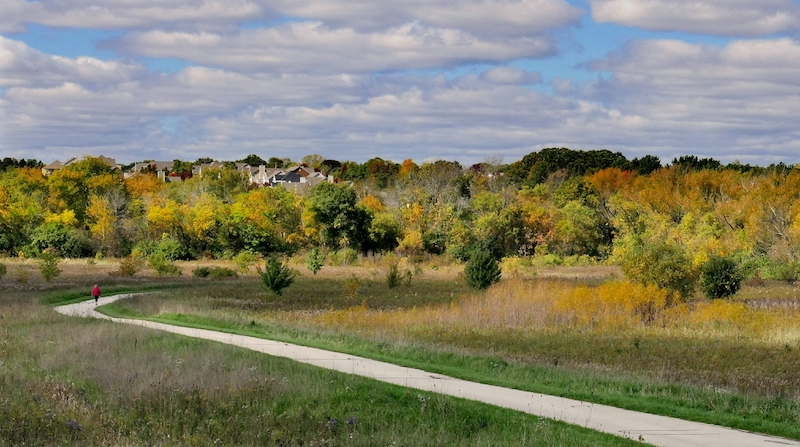
The off-road nature of much of the trail makes it an ideal setting for outdoor learning. “You walk down the steps of our building and you’re on the trail,” said Jamie Ferschinger, branch manager of the Urban Ecology Center in Riverside Park, which is just a short ride from downtown Milwaukee. “So we use the Oak Leaf Trail in a lot of our programming.”
Within a 2-mile footprint of the 40-acre park, there are 33 schools, and with a fleet of bikes available, the staffers at the park’s Urban Ecology Center are able to take these students out on the trail for field trips and summer camps.
“It’s a green corridor from the river in the park down to the lake, so it’s a great place to talk about river ecology and lake ecology, as well as native species and invasive species. Everything from small insects to big concepts can be taught along the Oak Leaf Trail.”
—Jamie Ferschinger, branch manager of the Urban Ecology Center in Riverside Park
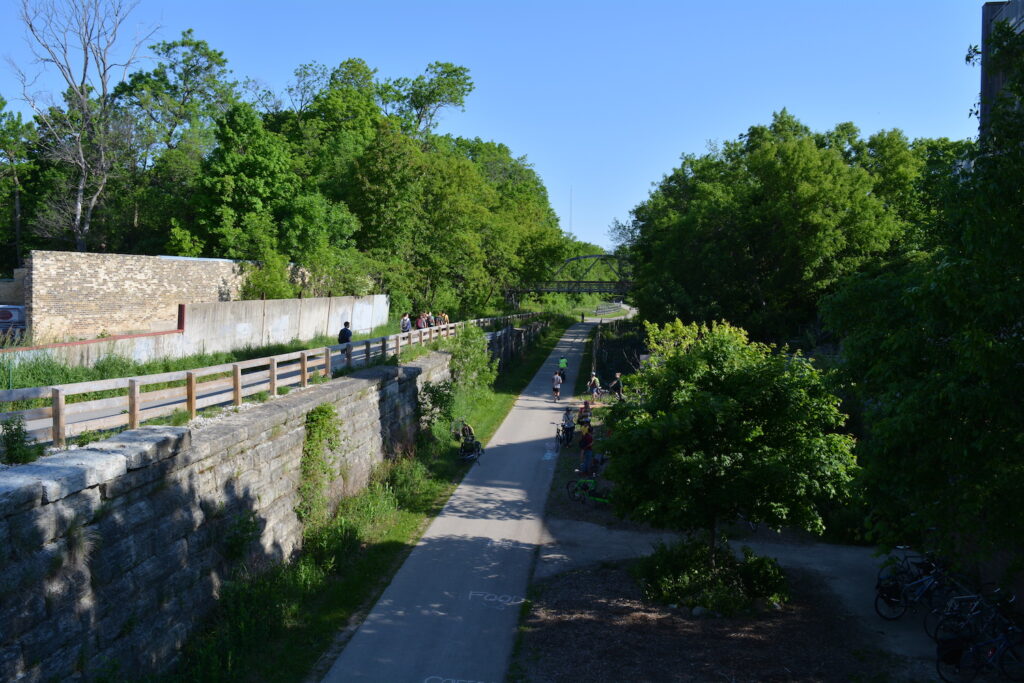
With trails being such a beloved community asset, Milwaukee County Parks is currently in the process of updating its Trails Network Plan, which was originally published in 2007. The new plan, anticipated to be ready by 2019, will include updated trail goals for the next five to 10 years, including expansions of the Oak Leaf Trail.
“Milwaukee is bike friendly, and the Oak Leaf Trail is a key component of the commuter network,” said Jessica Wineberg, program director for Wisconsin Bike Fed, a statewide bicycling advocacy organization and partner in the Route of the Badger. Of her own daily commute on the trail, she added, “It takes a little longer, but it gives me moments of zen.”
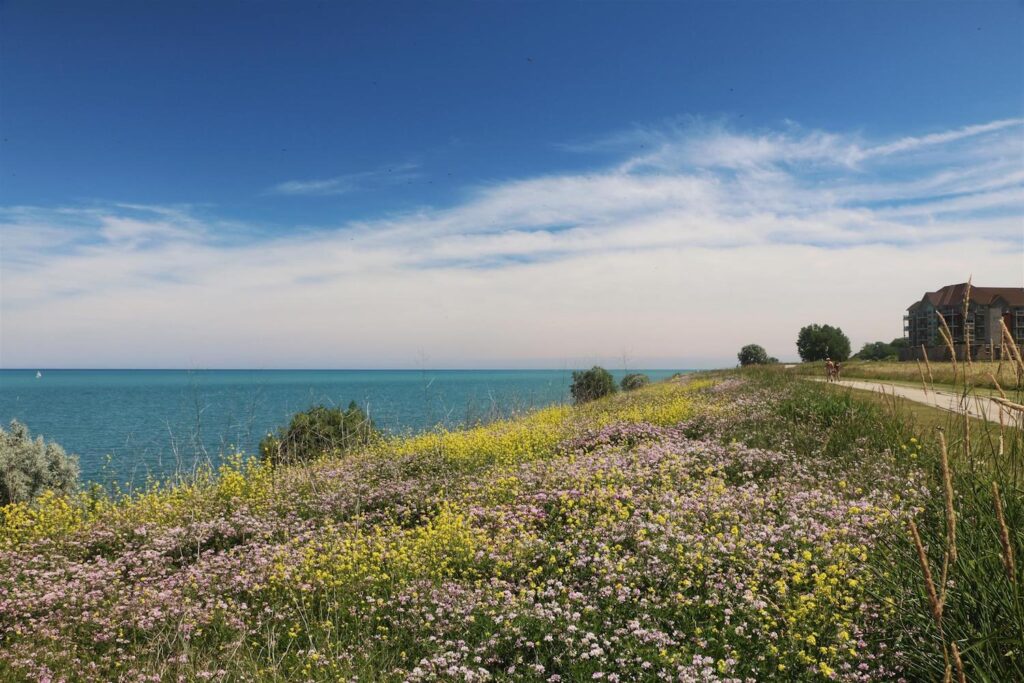
As proof of its importance to the transportation infrastructure, about 85 percent of the trail is cleared for continued bike use during the winter and is typically plowed within 48 hours of an average snowfall. Locals who need a ride can use Bublr Bikes year-round; the bike-share program offers 75 stations throughout the Milwaukee region, including six that serve the Oak Leaf Trail.
“In high-use areas, the trail sees 1,200 people daily, and even in winter, 500 people a day still use it.”
—Gage Brogan, the trails coordinator for Milwaukee County Parks
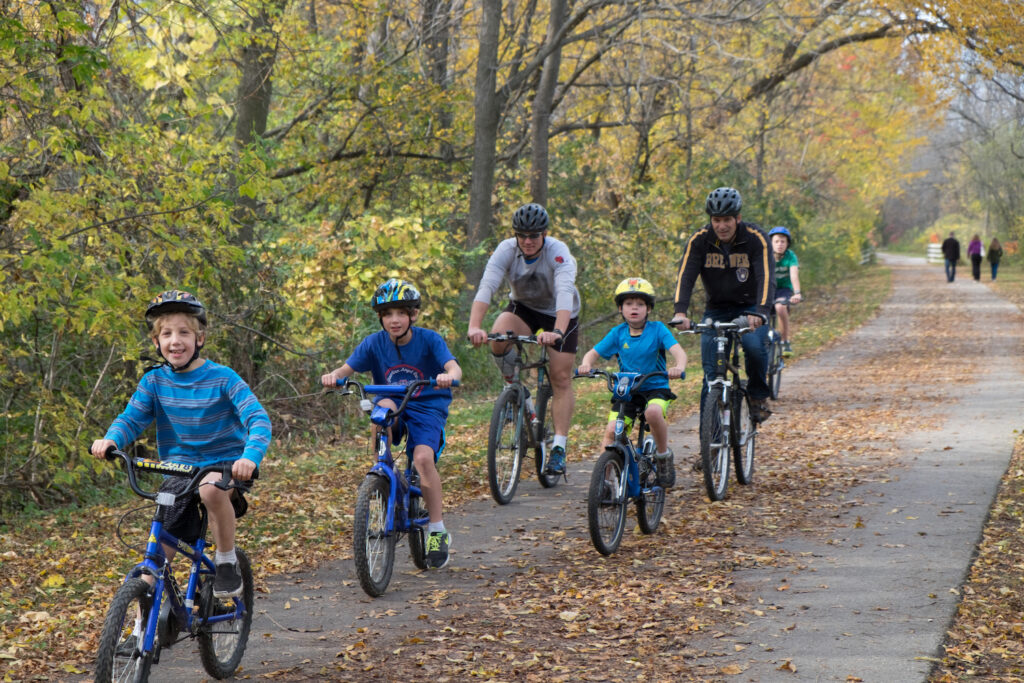
The Oak Leaf also connects to other popular trails in the area, including the Hank Aaron State Trail, the Beerline Trail and the New Berlin Recreation Trail, which enhances the ability of commuters to get around town and out to Milwaukee’s surrounding suburbs without using their cars. According to a recent BikeAble™ study by RTC, expansion of the connecting Kinnickinnic River Trail, coupled with the addition of another project called the 30th Street Corridor, would provide residents in the city’s poorer neighborhoods with greater access to the area’s phenomenal biking and walking trails, too.
“In addition to being the backbone of the system in Milwaukee County, the Oaf Leaf Trail is so extensive and wonderful that it’s a jewel of all southeast Wisconsin,” said Wineberg. “The more it connects, the better it gets.”

Donate
Everyone deserves access to safe ways to walk, bike, and be active outdoors.
